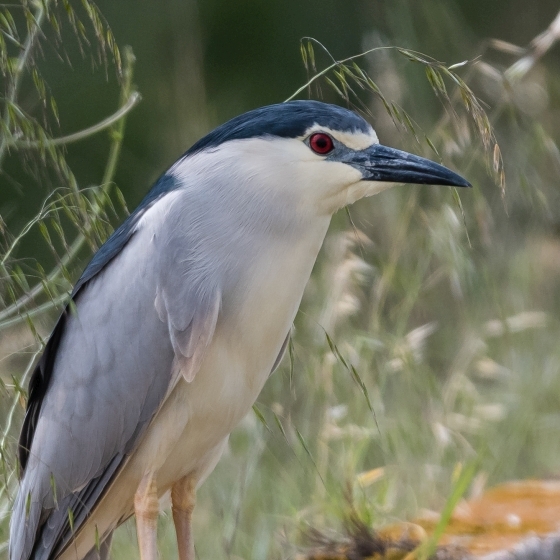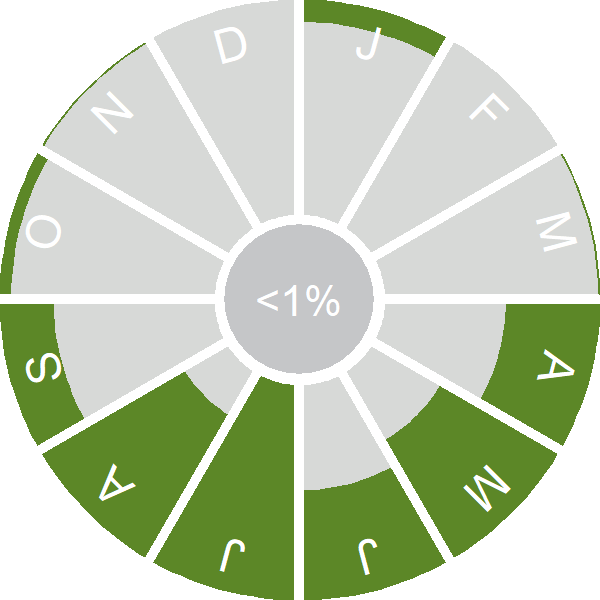Night Heron

Introduction
With a wide breeding range that extends across much of Eurasia, this is a scarce visitor. While wild birds are typically seen in either April/May or October/November, free-flying birds from collections may also be encountered.
Young Black-crowned Night-Herons often disgorge their stomach contents when disturbed. This habit makes it easy to study their diet.

Key Stats
Status and Trends
Conservation Status
Population Size
Population Change
Small numbers of Night Heron are seen on migration in the UK on an annual basis, typically concentrated in the south of England [White & Kehoe 2024], but these will be outnumbered by records of free-flying birds of captive origin. The first confirmed breeding of Night Heron in the UK took place in Somerset in 2017 and the species is now considered to be a colonising breeder [Eaton & the Rare Breeding Birds Panel 2023a]. The species is suspected to be decreasing across Europe [BirdLife International 2021].
Distribution
This scarce visitor is too rarely reported to map distribution.
Occupied 10-km squares in UK
or view it on Bird Atlas Mapstore.
or view it on Bird Atlas Mapstore.
European Distribution Map
Distribution Change
This scarce visitor is too rarely reported to map distribution change.
Change in occupied 10-km squares in the UK
Seasonality
This species has been too rarely reported to BirdTrack during 2011–22 to properly assess seasonality.
Movement
Britain & Ireland movement
Foreign locations of birds ringed or recovered in Britain & Ireland
Dots show the foreign destinations of birds ringed in Britain & Ireland, and the origins of birds ringed overseas that were subsequently recaptured, resighted or found dead in Britain & Ireland. Dot colours indicate the time of year that the species was present at the location.
- Winter (Nov-Feb)
- Spring (Mar-Apr)
- Summer (May-Jul)
- Autumn (Aug-Oct)

European movements
EuroBirdPortal uses birdwatcher's records, such as those logged in BirdTrack to map the flows of birds as they arrive and depart Europe. See maps for this species here.
The Eurasian-African Migration Atlas shows movements of individual birds ringed or recovered in Europe. See maps for this species here.
Biology
Survival and Longevity
Survival is shown as the proportion of birds surviving from one year to the next and is derived from bird ringing data. It can also be used to estimate how long birds typically live.
View number ringed each year in the Online Ringing Report.
Classification, names and codes
Classification and Codes
- Order: Pelecaniformes
- Family: Ardeidae
- Scientific name: Nycticorax nycticorax
- Authority: Linnaeus, 1758
- BTO 2-letter code: NT
- BTO 5-letter code: NIGHE
- Euring code number: 1040
Alternate species names
- Catalan: martinet de nit comú
- Czech: kvakoš nocní
- Danish: Nathejre
- Dutch: Kwak
- Estonian: ööhaigur
- Finnish: yöhaikara
- French: Bihoreau gris
- German: Nachtreiher
- Hungarian: bakcsó
- Icelandic: Nátthegri
- Irish: Corr Oíche
- Italian: Nitticora
- Latvian: nakts garnis
- Lithuanian: paprastasis naktikovis
- Norwegian: Natthegre
- Polish: slepowron (zwyczajny)
- Portuguese: socó-dorminhoco / goraz
- Slovak: chavkoš nocný
- Slovenian: kvakac
- Spanish: Martinete común
- Swedish: natthäger
- Welsh: Crëyr Nos

